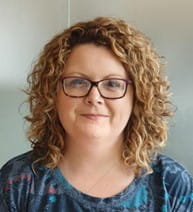Groundwater Completion Strategies for Complex Sites
Complex groundwater sites, such as those contaminated by dense non-aqueous phase liquids (DNAPLs), or those exhibiting challenging hydrogeologic conditions with highly variable hydraulic conductivities, continue to confound cleanup efforts, in some cases for decades. The conventional approach of selecting a remedial technology and applying it until contaminant concentrations meet maximum contaminant levels (MCLs) in groundwater are achieved has proven inefficient at best, and in many cases for complex sites, futile.
Establishing Cleanup Goals
Maximum contaminant levels (MCLs) and the restoration of beneficial uses have long formed the expected standards for cleanup of groundwater contamination. Over time, however, regulators and responsible parties have found that the timeframes for remediation to these ultimate cleanup goals are often much longer at complex sites than originally estimated, and that the selected technology might be limited in its effectiveness beyond a certain point. The National Contingency Plan states: “When restoration of groundwater to beneficial uses is not practicable, EPA expects to prevent further migration of the plume, prevent exposure to the contaminated groundwater, and evaluate further risk reduction.” This language provides some flexibility to establish remedial goals other than attainment of MCLs in some cases, but at a minimum paves the way to establishing interim goals related to halting migration, preventing exposure, and reducing risk on the way to the ultimate cleanup goal of MCLs.
In May of 2014, EPA issued a Groundwater Remedy Completion Strategy recommending site-specific actions and decision making processes to achieve groundwater remedial action objectives (RAOs) and associated cleanup levels using an updated conceptual site model, performance metrics and data derived from site-specific remedy evaluations. This document encourages critical review of the performance of groundwater remedies at some regular frequency relative to cleanup goals and, if necessary, reassessment of the remedy. According to this strategy, “If the existing remedy will not achieve RAOs and associated cleanup levels, either the remedial technology or the comprehensive remedy should be modified.”
We need to set realistic remedial goals to reduce risk and establish a measureable path toward remedial action objectives.
Complex Sites Require Multiple Remedies
A major challenge for remediation of groundwater at many complex sites is that the difference between the initial or residual contaminant concentrations and the ultimate concentration-based cleanup objectives are many orders of magnitude apart. For example, the difference between 50 ppm concentration in groundwater and a 5 ppb MCL is four orders of magnitude, requiring a 99.99% reduction in concentrations! In addition, large quantities of contaminant mass are often trapped in soil or bedrock horizons of very low hydraulic conductivity, making them very difficult to access.
In the past, feasibility studies and records of decision (RODs) often focused on a single remedial technology. However, each technology has a “sweet spot” or range of concentrations and site-specific factors where it can provide maximum concentration reduction, and our “tool box” of treatment technologies contains no technologies that alone can cost-effectively achieve the final objectives for all concentration ranges across the full range of geologic conditions at a complex site. Therefore, multiple-technology remedies are often needed to achieve these objectives.
Realistic Goal Setting for Combined Remedies
A recent EPA workshop, titled Combined Remedies – Their Time Has Come, emphasized that different technologies are typically needed for different areas of a site (e.g., high concentration source area or dilute plume) AND for different phases of the remediation. Encouraging the use of multiple technologies to achieve real remedial progress requires setting realistic, functional goals – those that demonstrate risk reduction while measuring progress toward absolute objectives. These interim, functional goals measure performance of a given technology throughout its useful life, and provide indicators for when the technology performance has reached a point that transition to a more appropriate technology for the new condition should be made.
Contaminant Mass Discharge as a Performance Metric
A key challenge for the environmental professional is to set realistic remedial goals that are necessary and appropriate to reduce risk and establish a measurable path toward remedial action objectives. Cleanup time frames are especially difficult to estimate, and contaminant mass in the subsurface is very difficult to quantify. However, contaminant mass is often not directly related to risk of exposure or harm. Rather, contaminant mass discharge is directly related to migration, potential exposure and risk. Contaminant discharge can be assessed and monitored in a variety of ways and can form the basis for realistic risk reduction and continued assessment of progress of the remedial systems. Accordingly, mass discharge and the associated dynamics of the plume (i.e., plume stabilization or reduction) make appropriate groundwater remedy performance metrics.





